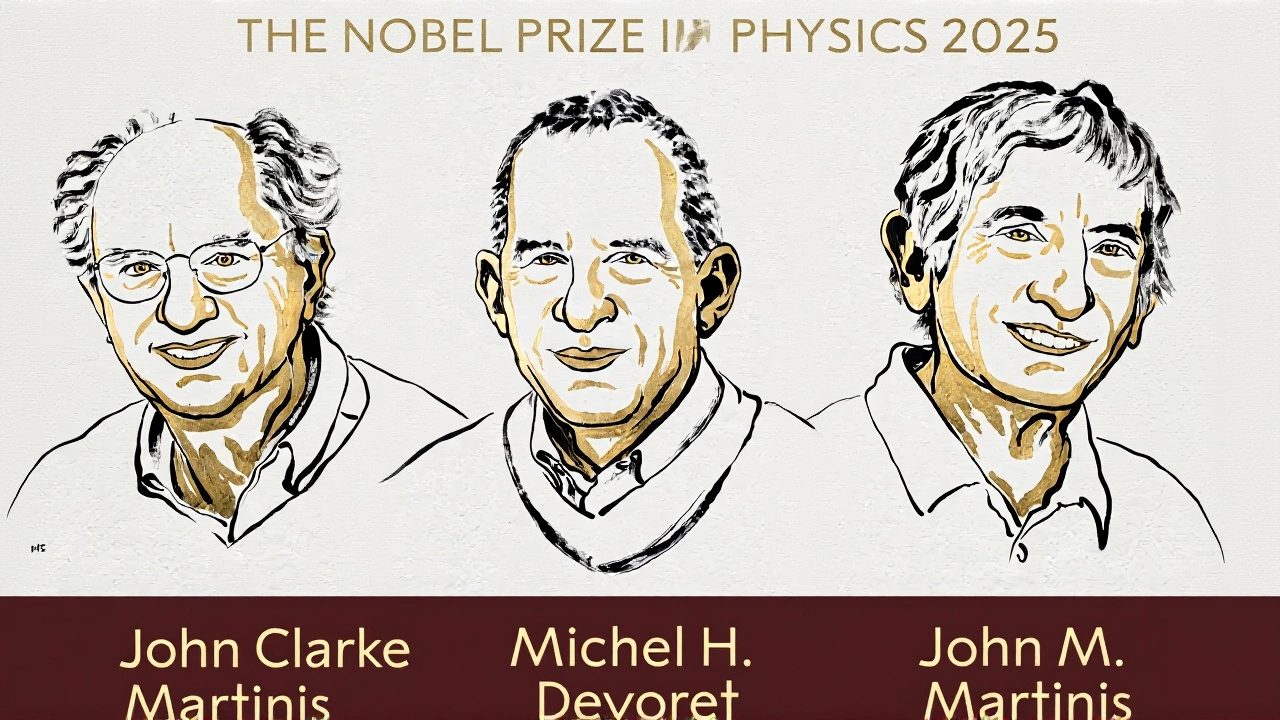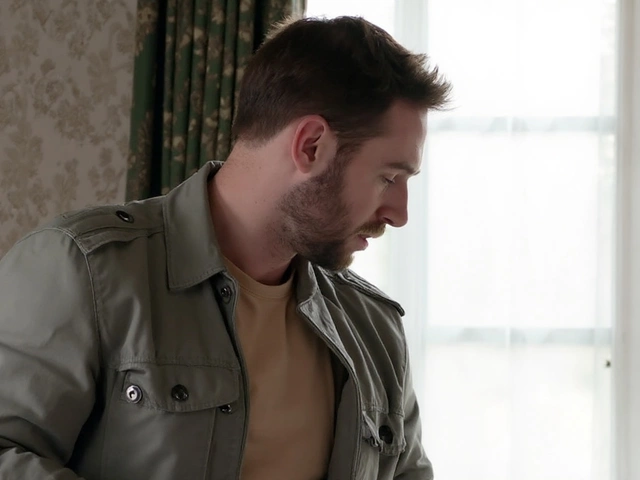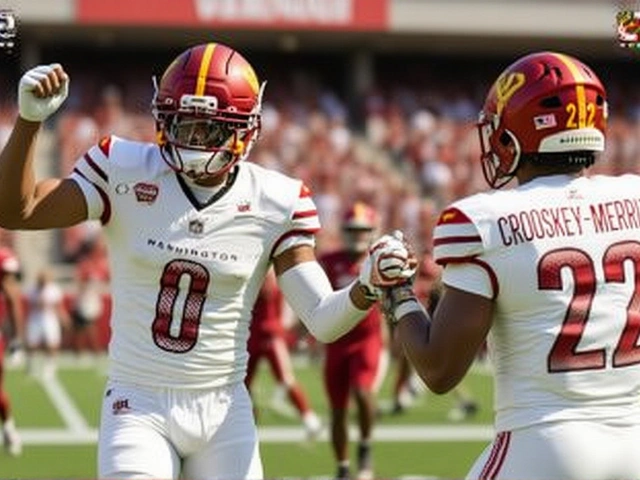 7
Oct,2025
7
Oct,2025
When Nobel Prize in Physics 2025Stockholm was announced on October 7, 2025, the world’s scientific community held its breath. The Royal Swedish Academy of Sciences handed the coveted medal jointly to three veterans of quantum research: John Clarke, professor at University of California, Berkeley, Michel H. Devoret, who splits his time between Yale University and University of California, Santa Barbara, and John M. Martinis of UC Santa Barbara. Their citation read: “for the discovery of macroscopic quantum tunneling and energy quantisation in an electric circuit.”
Why This Award Matters
Here’s the twist: quantum mechanics has been around for a century, but seeing its quirks on something you could literally hold in your hand was unheard of—until these three proved it doable. Their work showed that groups of electrons could act as a single quantum entity, tunneling through an insulating barrier inside a superconducting chip. That’s not just sci‑fi; it’s the backbone of today’s quantum computers.
Turns out the phenomenon they demonstrated was first hinted at in the 1980s, when labs worldwide were flirting with superconducting circuits. Clarke, Devoret, and Martinis took those early whispers and turned them into a full‑blown chorus, measuring discrete energy packets—quanta—emitted and absorbed by a circuit that was, by all accounts, macroscopic. In a 1988 *Science* paper they famously wrote that they had observed quantum behavior in an object “big enough to get one’s grubby fingers on.”
From Theory to Chip
The experimental setup resembled a tiny refrigerator mixed with a sleek silicon wafer. Superconducting materials, chilled to just a fraction of a degree above absolute zero, formed a circuit with a thin insulating barrier. When the researchers sent a pulse of energy through, the circuit responded not with a smooth flow but with sudden jumps—evidence that electrons were tunneling en masse.
In plain English, imagine a crowd of people suddenly slipping through a solid wall as if it were a curtain. That’s what happened on the quantum level, and the voltage spikes they recorded confirmed the theory. By quantifying the energy steps, the team proved that the circuit’s energy was not continuous but came in neat packets, just like photons in light.
Voices from the Nobel Committee
Olle Eriksson, chair of the Nobel Committee for Physics, summed up the significance at the press conference: “There is no advanced technology used today that does not rely on quantum mechanics… mobile phones, computers, cameras, and the fiber‑optic cables that connect our world.” He added that awarding the prize nearly a hundred years after the birth of quantum theory underscores its endless capacity for surprise.
John Clarke, clearly humbled, told reporters over the phone, “It certainly had not occurred to us in any way that this discovery would have such a significant impact; we were buried in understanding the physics and the calculations. I’m completely stunned, of course.” Devoret echoed that sentiment, noting that the work was driven by pure curiosity rather than a race for commercial gain.
Impact on Modern Quantum Technologies
Why should a casual reader care? Because the devices that power your smartphone and the emerging quantum computers in labs across the globe trace a lineage back to this very discovery. The ability to control macroscopic quantum states is what lets qubits maintain coherence long enough to perform calculations.
Industry analysts point out that the breakthrough has already accelerated research into fault‑tolerant quantum processors. Companies like IBM, Google, and Rigetti are incorporating superconducting qubits that rely on the same tunneling principles. Even beyond computing, precision sensors for magnetic fields and gravitational waves are benefitting from the same physics.
Looking Ahead: The Next Quantum Leap
What’s next? The Nobel laureates themselves plan to explore larger‑scale circuits that could host dozens of coupled qubits, pushing the envelope toward practical quantum advantage. Meanwhile, funding agencies in Europe and Asia have announced new grants specifically targeting macroscopic quantum phenomena, signaling a wave of investment that could reshape the tech landscape in the next decade.
In the words of Eriksson, “We are looking at a future where the boundaries between the quantum and classical worlds blur even further.” If that sounds like science fiction, remember that less than a decade ago, the very idea of a quantum computer was relegated to textbooks.
Historical Context: A Century of Quantum Revolutions
To appreciate the moment, rewind to 1900 when Max Planck introduced the quantum of action, and to 1925 when Heisenberg and Schrödinger formalised the theory. The Nobel Committee’s decision ties together that lineage with a contemporary breakthrough, reminding us that fundamental research can echo across generations.
Back in the 1980s, the first superconducting qubit experiments were conducted at institutions like the University of Basel and the National Institute of Standards and Technology. Those early prototypes were noisy and unreliable. Clarke, Devoret, and Martinis took those shaky foundations, refined fabrication techniques, and introduced meticulous microwave measurement methods that finally gave the community a clear window into macroscopic quantum behavior.
Frequently Asked Questions
How does macroscopic quantum tunneling affect everyday technology?
The tunneling effect lets superconducting circuits store and manipulate quantum information with high fidelity. That capability underpins today’s quantum‑computing prototypes and improves the sensitivity of sensors used in medical imaging and navigation, eventually trickling down to consumer devices as they become commercially viable.
Who are the key institutions behind the 2025 Nobel‑winning research?
The trio’s work was anchored at the University of California, Berkeley, Yale University, and the University of California, Santa Barbara. Their collaborations spanned labs in the United States and Europe, with critical contributions from the National Institute of Standards and Technology and several private quantum‑technology firms.
What timeline led to the Nobel announcement?
Initial experiments began in the early 1980s. By 1988 the team published their landmark *Science* paper. Over the next three decades, the findings were refined, leading to practical qubit designs in the 2010s. The Nobel Committee reviewed nominations throughout October 2025, announcing the winners on October 7.
What do experts say about the future of quantum research?
Quantum physicist John Preskill predicts that controlling macroscopic quantum states will unlock error‑corrected quantum computers within the next 10‑15 years. He adds that the breakthrough solidifies a roadmap for scaling up qubit numbers while preserving coherence.
Why is the Nobel award significant after a century of quantum mechanics?
It highlights how a theoretical framework born in the early 1900s continues to produce tangible, world‑changing technologies. The award also signals the scientific community’s confidence that quantum engineering is moving from laboratory curiosities to mainstream applications.




